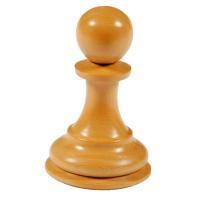
Pawn Endgame: Race to the a-file.
This series of articles is designed to improve your endgame technique. Every week there is a position at the end of the article for you to play out with someone or a computer. The detailed explanation of how to get the maximum out of these exercises can be found in the first column.
This week's article will be a little shorter for the reason that my computer broke and I am using my friend's Mac (never ever had a Mac in my life) to write this article while waiting for the round to start of a long weekend tournament. I have lost my database with endgames, from which I took my examples, thus do not know the end of the game of last week's problem. The database that I use is Informants' Endgames. If you try putting this position into MegaDatabase all it will show is that the game magically ended at this position with a 0-1 result. In reality there followed many moves, since the position is not at all clear yet. I will do my best to give you insight into the position from my perspective and from my trainer's perspective too.
Let us get to the first game. I had white and here we were both agreed that black is better. Why? Well, black has an outside passed pawn, which in endgames is a very important factor. White also has an outside passed pawn but it is closer to the a-pawns than the f-pawn. The strategy of the play would be for white to eliminate the f-pawn and for black to eliminate the c-pawn. Imagine that after mutual elimination, white will have his king further away from the a-pawn than the black king. The black king will march to the a-file and take the a-pawn. Then, it is the matter of time factor: will the white king be able to get to the first rank, specifically to the c1-square before the black king gets there. If white manages that then it will be a theoretical draw, if not then black will win. The first game was a rather straight-forward one, where the sides tested general ideas and tried the time factor.
The following ideas were extracted from the previous game:
- White should push a5 as soon as possible to keep the black king away from the c1 square.
- Black should be in no rush to push the f-pawn, since white will need time to go after it.
- White uses the c-pawn as a deflection device to get the black king away from the f-pawn.
- White must at all times have the f-pawn under control; if the black king blocks the white king from the range of the f-pawn, the game is over.
So the first game revealed quite a bit. Black is better this is for sure, but how much was still a mystery to us. Is it better enough to get a win or is it close to a draw? The second option seemed more plausible. The material is equal and the f-pawn is not a g-pawn. If black had a g-pawn it would be more likely to be a win. Here, white has enough time to get to the a-pawn after capturing the f-pawn. The next game featured the dance of both kings where both sides were reluctant to move their passed pawns. However, both sides were eager to move the a- pawn.
The following ideas can be summarized here:
- With white pawns on c4 and a4 the white king can capture the f-pawn only when it advances to f4, otherwise there would not be enough time to get back to the a-pawn.
- Black can keep the king on the 6th file and advance the a5 pawn, since the white king's movements are limited to the f-pawn's perimeter.
- White can always wait defending the c4-pawn when the a4-pawn is fixed, for black's pawn to advance to f3 and then take it.
This is the moment in the article where I would usually put the solution but this time I don't have my computer and cannot access the database. So, if any of you have the database with the solution please post it here, otherwise I will put it up next week. It seems from our two games that the position is drawn but there might be some hidden solution, study-like... this is a pawn endgame after all and studies are created more often than in other endgames. We have not covered queen endgames yet, so next week's article will fill this gap.






